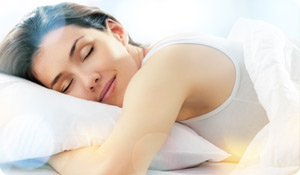
If you have a cat or dog, you may envy their ability to nap throughout the day. Unlike our pets and most other mammals, however, humans sleep during specific blocks of time. According to the National Sleep Foundation, it's not clear this is our natural pattern.
Benefits of Napping
Scientific evidence supports the mental health benefits of short naps, and a Sleep in America poll found that 46 percent of adults napped for an average of an hour at least twice in the month preceding the poll.
Short, restorative naps reduce sleepiness, improve cognitive performance, mood, and alertness, and reduce mistakes and accidents. A NASA study of sleepy military pilots and astronomers found that a 40-minute nap improved their performance significantly.
The Mayo Clinic says you may want to consider a nap when you know you're going to experience sleep loss, or if you suddenly become fatigued or sleepy.
Get the Most From Your Nap
The keys to getting the most mental health benefits from your naps are timing, duration, and environment.
1. Timing. We have an internal clock that regulates our sleep wake cycles and daily energy patterns. Most of us experience a dip in alertness between about 2 p.m. and 3 p.m. This is an optimal time to nap. Your body may not yet be ready earlier in the day, and if you nap too late in the afternoon, it may interfere with your nighttime sleep.
2. Duration. While the Spanish have historically enjoyed two-hour siestas, shorter naps of 20 to 30 minutes are better. In fact, just a 10-minute nap reduces sleepiness and improves cognitive performance, especially when you must be immediately alert when you wake.
While sleeping longer than 30 minutes can be beneficial later in the day, it generally produces sleep inertia upon waking. If you've ever taken a long nap, you're probably familiar with that groggy and disoriented feeling you experience for a time after waking. Longer naps can also exacerbate existing sleep problems.
3. Environment. Try to nap in a quiet, comfortable area to facilitate falling asleep quickly. You may have trouble convincing your boss that a mid-day siesta will improve your cognitive functioning, alertness, and mood. However many leaders and intellectuals took power naps, including president Bill Clinton, Thomas Edison, Albert Einstein, and Winston Churchill, and in 2007, the French Health Minister, Xavier Bertrand, felt they were so important he wanted to make short afternoon naps a legal right for all workers.
Sources:
National Sleep Foundation. "Napping."
http://www.sleepfoundation.org/article/sleep-topics/napping
Milner, Catherine E., and Cote, Kimberly A. "Benefits of napping in healthy adults: impact of nap length, time of day, age, and experience with napping." Journal of Sleep Research 18(2) (2009): 272-281. Web. 19 MAY 2009. http://onlinelibrary.wiley.com/doi/10.1111/j.1365-2869.2008.00718.x/full
Mayo Clinic. "Napping: Do's and don'ts for healthy adults." Web. 5 October 2010.
http://www.mayoclinic.com/health/napping/MY01383
Lockhart, Carly. "Want a Siesta?" BBC. Web. 10 April 2007. http://www.bbc.co.uk/jersey/content/articles/2007/02/02/siesta_feature.shtml





